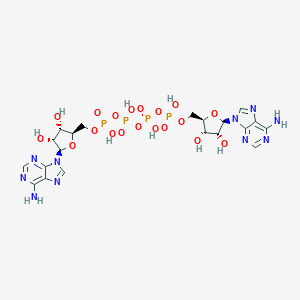| Synonyms |
Click to Show/Hide Synonyms of This Metabolite
(PpA)2', a(5')P4(5')a, 'AppppA', Bis(5'-adenylyl) diphosphate, P1,P4-Bis(5'-adenosyl) tetraphosphate, Bis(5'-adenylyl) diphosphoric acid, P1,P4-Bis(5'-adenosyl) tetraphosphoric acid, 'Diadenosine tetraphosphoric acid', 5',5'''-diadenosine tetraphosphate, Adenosine 5'-tetraphosphate, 5'-ester with adenosine, Adenosine-(5')-tetraphospho-(5')-adenosine, Diadenosine 5',5'''-P1,P4-tetraphosphate, P1,P4-Di(adenosin-5'-yl)tetraphosphate, P1,P4-Diadenosine-5'-tetraphosphate, 'Ap4a', p(1), p(4)-Diadenosine-5'tetraphosphate, Diadenosine 5',5'''-p(1),p(4)--tetraphosphate, Adenosine(5')tetraphospho(5')adenosine, Bis(5'-adenosyl)tetraphosphate, P1,P4-Bis(5'-adenosyl)tetraphosphoric acid, p(1),p(4)-Bis(5'-adenosyl) tetraphosphoric acid, 'Diadenosine tetraphosphate
|
 click to show the details of this protein
click to show the details of this protein
 click to show the details of experiment for validating this pair
click to show the details of experiment for validating this pair

